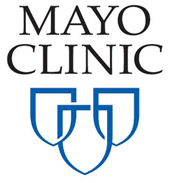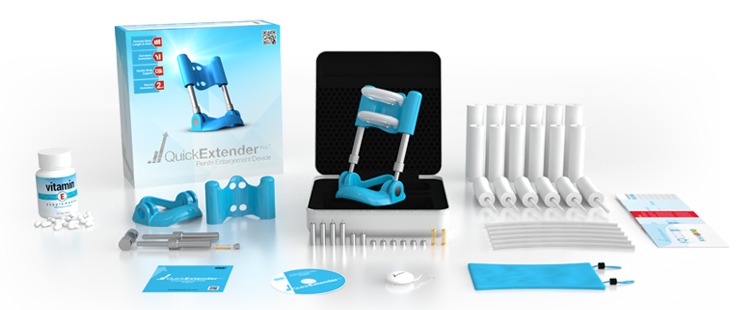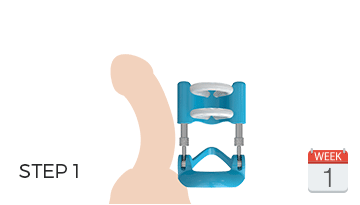
Some men experience a normal curvature of the penis. Their erect penis may bend in an upward or downward curve or to one side of the body. According to medical experts at the Mayo Clinic, a bent penis is a rather common condition. After all, penises vary in size and shape.  Unless a bent penis causes pain or interferes with sexual intercourse, it is usually not a serious problem.
Unless a bent penis causes pain or interferes with sexual intercourse, it is usually not a serious problem.
A bent penis can become serious matter, however. Some men suffer from severe penis disorders like Peyronie’s disease, a medical condition caused by the development of scar tissue inside the penis. Peyronie’s causes abnormal penile curvatures and painful erections. It often causes significant anxiety and stress between men and their sexual partners.
To determine the right method of treatment and correct the problem, it is vital to distinguish between Peyronie’s disease and a simple curvature of the penis. Men can best understand these differences by studying and learning the symptoms, causes, risk factors, and treatment options for each condition.
A Bent Penis: A Normal And Common Condition
When men are sexually aroused, blood flows into the spongy areas in the shaft of the penis, causing it to expand and harden into an erection. When the spongy area inside the penis do not expand evenly, the penis can bend.
Medical research indicates that nearly 20 percent of all men are born with a curved penis. For those who are born with the condition, the curvature is typically due to normal differences in penis anatomy. Men who develop a penis curve later in life usually experience damage to the penis or some kind of change in penis anatomy. In the case of Peyronie’s disease, scar tissue grows inside the penis, causing an abnormal curve and painful erections.
Doctors list numerous underlying causes for a bent penis. Inherited fibrous tissue (collagen) and normal differences in penis anatomy are two common causes. Penile injury, autoimmune disorders, and certain medications also contribute to curvatures. In fact, beta blockers used to treat high blood pressure can sometimes cause the penis to bend.
Although a curved penis may not require medical treatment, many men choose to correct their condition with various therapies. As some studies suggest, women sometimes find penis curvatures to be unattractive and sexually undesirable. As a result, sexual intercourse can become less pleasurable, and more painful, for both sex partners.
Today, men can correct their penile curvature without surgical intervention. A penile traction device is a popular treatment method. Of course, there are times when surgery may be necessary. A bent penis that causes physical pain may interfere with sexual intercourse. Consulting a urologist, or specialist who deals with urinary and sexual problems, may be in order.
Peyronie’s Disease: An Abnormal Penis Disorder
 Peyronies disease is a medical condition that results from scar tissue and causes painful erections. Essentially, it is a connective tissue disorder. While a curved erection is common for some men, Peyronie’s causes a significant penis curve and intense pain. It can prevent men from having sexual intercourse.
Peyronies disease is a medical condition that results from scar tissue and causes painful erections. Essentially, it is a connective tissue disorder. While a curved erection is common for some men, Peyronie’s causes a significant penis curve and intense pain. It can prevent men from having sexual intercourse.
The symptoms may appear suddenly and unexpectedly, or they may develop over time. The five most common signs include scar tissue, penile curvature, penis pain, impotence, and a short penis. The scar tissue associated with Peyronie’s disease, also known as plaques and characterised by flat lumps, can be felt under the penis skin.
Peyronie’s disease causes an unusual and significant bend in the penis, which may curve upward, downward, or to the left or right side. In some cases, the erect penis looks like an hourglass with a thin band around the shaft.
Pain is a common symptom. Some men have pain only during an erection, while others experience painful orgasms. A severely curved penis may even be painful to the touch.
 Men with Peyronie’s disease often experience problems maintaining an erection. They may find it extremely difficult to get an erection or maintain one. In some men, the penis may actually become shorter due to curvature from the disease.
Men with Peyronie’s disease often experience problems maintaining an erection. They may find it extremely difficult to get an erection or maintain one. In some men, the penis may actually become shorter due to curvature from the disease.
Minor penis injuries usually do not lead to Peyronie’s disease. But numerous factors may contribute to poor healing or the build-up of scar tissue. These include heredity and genetics, age, and connective tissue disorders. Cigarette smoking and prostate surgery are also linked to the development of Peyronie’s disease.
The abnormal curvature and intense pain associated with Peyronie’s rarely improves without medical intervention. An accurate diagnosis is necessary to rule out other health problems and determine the best treatment option.
Doctor usually take a “wait and see” approach if a bent penis meets three conditions: (1) the penis curve is not severe, (2) sex is possible without pain, and (3) the pain is very mild. Oral medications and penile injections are sometimes used to treat penis curvatures. But current medical evidence indicates that these methods are limited in their effectiveness.
Doctors typically recommend surgery only if a penile deformity is severe, painful, and prevents sexual intercourse. Common surgical procedures include shortening the penis, lengthening the penis, and inserting penile implants.
The Best Treatment Option For A Bent Penis
Barring the need for surgery, the best treatment method for a curved penis is penile traction therapy. Whether someone has a normal bent penis or penile deformity caused by Peyronie’s disease, non-invasive traction therapy is safe and effective for most men.
The Quick Extender Pro is a penis extender that lightly stretches the penis on a daily basis. Known as a penile traction device, Quick Extender Pro is easy to use, and the enlargement process is pain-free. Best of all, the penis extender does not interfere with normal penis functions.
The Quick Extender Pro exposes the penis to constant traction, forming minute tears along the penis shaft. During the course of treatment, the body will recognise these tears as gaps in the penis tissue. Through the healing process, the body repairs these gaps with mitosis and cytokinesis.
Mitosis is a process of cellular division. As the penis tissue cells divide and multiply through mitosis, they fill in the gaps caused by penile traction. The cell splitting continues through cytokinesis, or the final stages of cellular division and tissue growth.
The Quick Extender Pro acts as a penis brace. Not only does it correct penile curvature, but it enlarges the penis in length and girth. Anecdotal studies indicate greater satisfaction (and less anxiety) by men who use a penile traction device, and by their sex partners, as well. In most cases, the Quick Extender Pro is the best treatment option for curvature of the penis, whatever the cause.





 Discreet Delivery
Discreet Delivery Discreet Billing
Discreet Billing Made in the USA
Made in the USA



I’d like more information on this. I have a downward curvature of my erection and would like a consult.